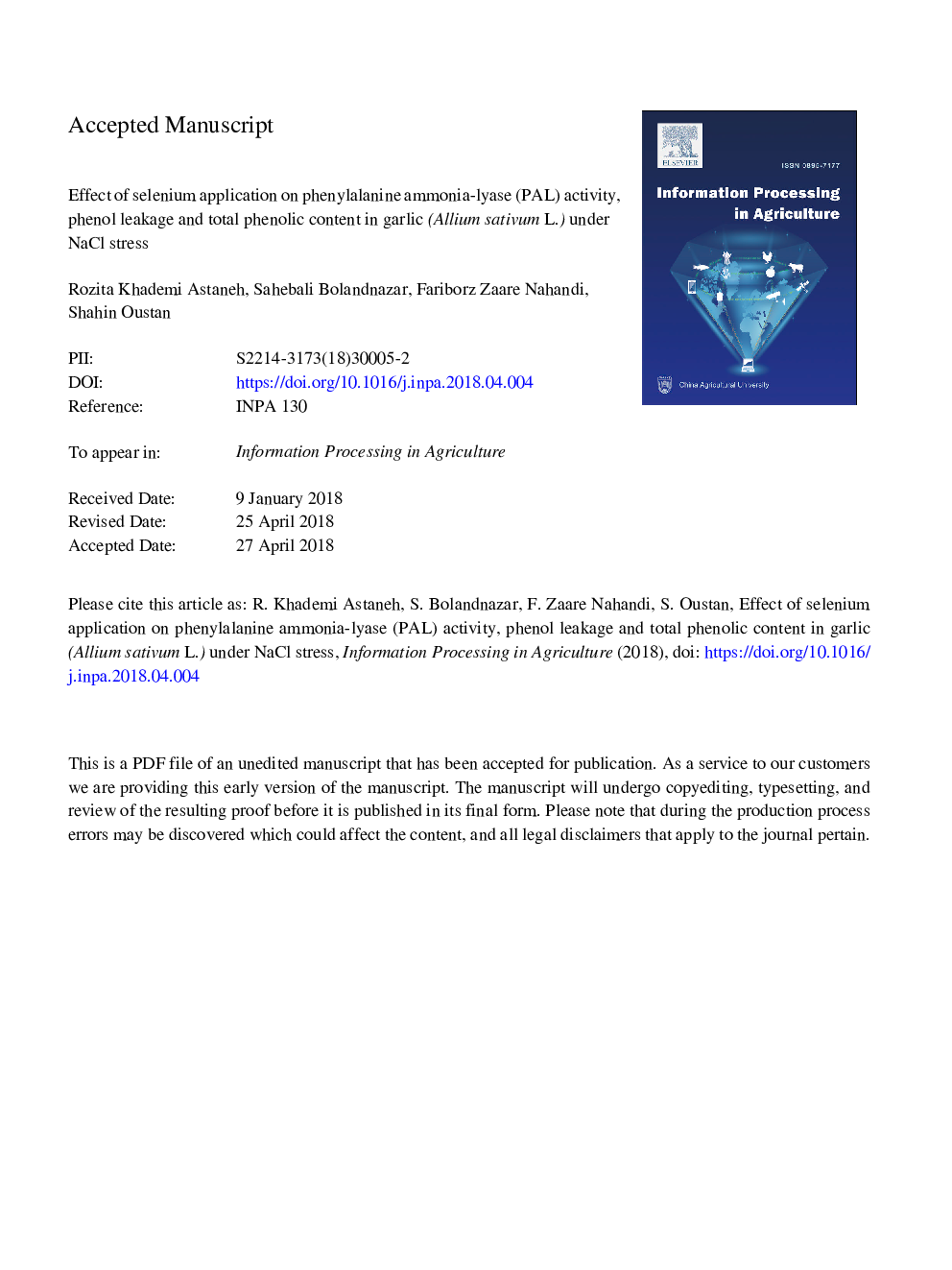| Article ID | Journal | Published Year | Pages | File Type |
|---|---|---|---|---|
| 8875327 | Information Processing in Agriculture | 2018 | 10 Pages |
Abstract
It is well known that salinity has badly effect on plant growth all over the world and greatly reduces crop production in the affected regions. Selenium can function as an antioxidant in plants and also in low concentration can promotes plant growth and produce tolerance against stress. This study was conducted in order to determine the effects of selenium (Se) application (0, 4, 8 and 16â¯mgâ¯Lâ1) on phenylalanine ammonia-lyase (PAL) activity, phenol leakage and total phenolic content of garlic under salt stress (0, 30, 60 and 90â¯mM NaCl). The highest PAL activity was recorded at 60 and 90â¯mM NaCl salinity with application of 8â¯mg Se Lâ1. Also, when Se was added to the salt-stress garlic, the level of phenol leakage was decreased significantly at two levels of NaCl concentration (by 52% and 40% at 30â¯mM NaCl with application of 4 and 16â¯mg Se Lâ1, and by 50% at 90â¯mM NaCl with application of 4â¯mg Se Lâ1, respectively) in comparison to the salt-stressed garlic without Se. The results showed that Se can increase the salt tolerance of garlic by protecting the cell membrane against lipid peroxidation. The highest concentration of phenols was recorded at 90â¯mM NaCl salinity level with application of 4 and 8â¯mg Se Lâ1, that respectively produced 59% and 51% higher phenols than control treatment without Se. So, application of optimal Se level can increase the potential of garlic in a medium with relatively high level of NaCl.
Related Topics
Life Sciences
Agricultural and Biological Sciences
Agricultural and Biological Sciences (General)
Authors
Rozita Khademi Astaneh, Sahebali Bolandnazar, Fariborz Zaare Nahandi, Shahin Oustan,
